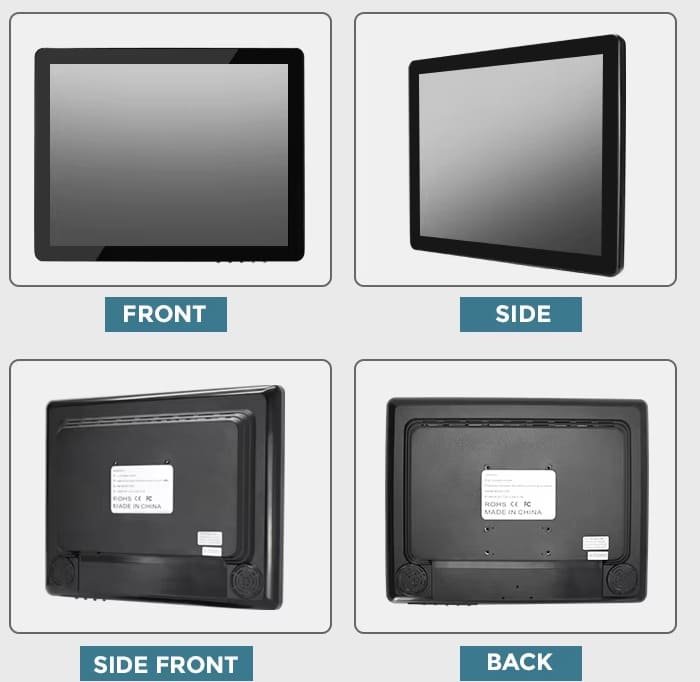Industrial LCD monitors often face challenges like temperature fluctuations, voltage instability, and ambient light changes, which can affect brightness consistency. Below are proven methods to ensure stable brightness in critical applications.
- Use High-Brightness Panels with Wide Temperature Range
Select industrial-grade LCDs (500–1500 nits) with wide operating temperatures (-30°C to 70°C).
Avoid consumer-grade panels—they dim or fail in extreme conditions.
- Implement Automatic Brightness Control (ABC Sensors)
Ambient Light Sensors adjust brightness dynamically based on surroundings.
IR/Photodiode Sensors ensure optimal visibility in changing light (e.g., outdoor kiosks).
How to Install:
Connect an ALS (Ambient Light Sensor) to the monitor’s control board.
Configure via OSD (On-Screen Display) settings or software (DDC/CI protocol).
- Use Constant Current LED Backlight Drivers
Problem: Voltage fluctuations cause flickering or dimming.
Solution:
Replace cheap PWM drivers with constant current LED drivers.
Use industrial power supplies (9V–36V DC) for stable input.
- Thermal Management (Prevent Overheating/Cold Dimming)
Issue: Extreme heat/cold reduces LED brightness.
Solutions:
Add heat sinks to the backlight assembly.
Use fanless designs with thermal pads.
For sub-zero environments, preheat the display before startup.
Example:
Medical displays often use heating films to prevent cold-start dimming
- Firmware & Calibration Adjustments
Factory Calibration: Ensure the monitor is calibrated for uniform brightness.
Manual Brightness Lock: Disable auto-dimming via OSD.
Gamma Correction: Adjust via colorimeter tools (e.g., X-Rite i1Display).
Steps:
Enter service menu (varies by manufacturer).
Disable Dynamic Contrast (DLC/ACR).
Set fixed brightness/backlight level.
- Power Supply Stabilization
Problem: Unstable voltage causes brightness fluctuations.
Solutions:
Use industrial-grade 24V DC power (instead of 12V).
Add a voltage regulator (LM317) or UPS backup.
Implement EMI filters to reduce electrical noise.
- Optical Bonding (Reduce Reflectivity & Improve Stability)
Problem: Air gaps between layers cause glare and brightness loss.
Solution:
Optically bond the LCD with touch panel (eliminates air gaps).
Improves readability & brightness uniformity.
Best For:
Outdoor digital signage
Military/aerospace displays
- Scheduled Maintenance & Monitoring
Issue: Backlight LEDs degrade over time.
Prevention:
Use industrial LCDs with 50,000+ hour lifespan.
Monitor brightness with light meters periodically.
Replace backlights before failure (typical lifespan: 5–7 years).
Final Recommendations
For extreme environments → Use high-brightness (1000+ nits) + optical bonding.
For fluctuating light → Install ambient light sensors (ABC).
For power instability → Use 24V DC + voltage regulator.
For long-term reliability → Choose industrial-grade monitors

